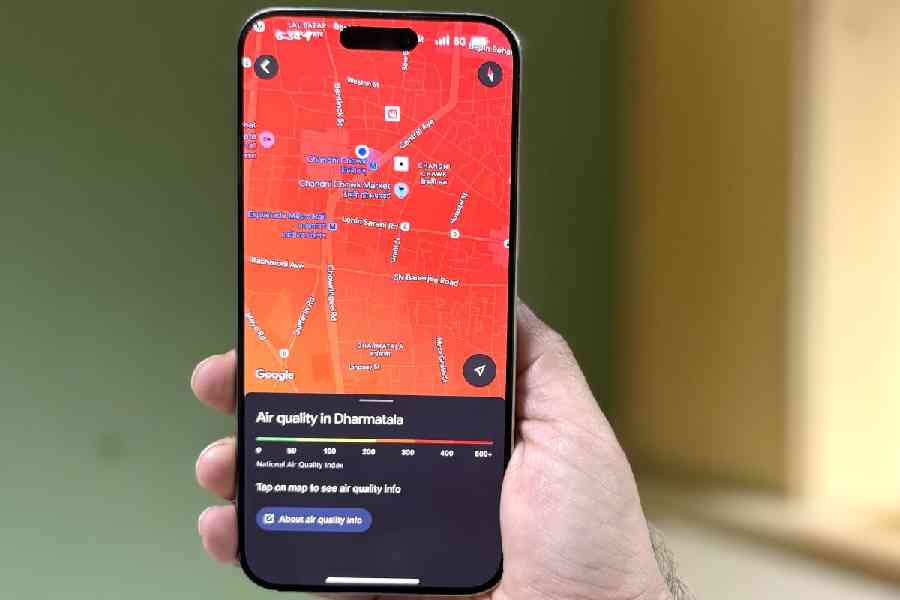The city, thankfully, has avoided the dreaded “dark red zone” on Google’s timely offering, Air View+, at least for the day while Delhi continues to trudge through an air pollution nightmare and so do many other parts of the country.
A new feature within Google Maps is an “ecosystem-based” solution that offers hyperlocal air quality information.
Data is combined — and analysed using Google AI by researchers and sustainability startups — from a number of sources, including a sensor network, government data, satellite imagery, weather and wind patterns, traffic conditions, land cover, and more.
In Google Maps, select the Air Quality layer from the “Layer” button on the home screen and tap on any location on the map. Click the Weather widget on the “Explore” tab on the home screen for AQI (air quality index) info at the current location.
If you can’t find this, in the app’s search bar, key in “Air Quality”.
The map’s colour key shows air quality from zero to 500+, marked by colour blocks going from dark green to dark red.
According to the National Air Quality Index, dark green represents “good” air quality and dark red “severe” air quality.
Sitting indoors, in Chandni Chowk around 6.30pm, the reading was in the “orange zone” (“poor” air, according to the index) bordering on the “bright red” zone, while neighbourhoods like Tollygunge and Jadavpur were in the “yellow zone” (“moderate” air).
Google’s approach involves collaborating with local climate tech firms, including local sustainability startups, researchers/climate action groups, corporations and city administrators.
Climate tech firms Aurassure and Respirer Living Sciences have set up an air quality sensor network in cities that lacked the requisite infrastructure to monitor air quality.
The sensors measure several air quality parameters such as PM2.5, PM10, CO2, NO2, ozone and VOCs, besides temperature and humidity, taking measurements every minute.
Deployed in static locations (such as administrative establishments, commercial buildings and utility poles) in more than 150 Indian cities, the sensors continuously monitor air quality.
Google has customised the model for India to reflect the methodology, categorisation and guidance, as defined in the National Air Quality Index. If you want air-quality details about a location away from you, like New Delhi, the map has to be navigated manually.
Google has said the sensors have been validated and calibrated with support from researchers from IIT Delhi, IIT Hyderabad, state pollution boards and climate action groups like CSTEP.
The company hopes the information will be “important for vulnerable populations such as young children or the elderly, enabling families to take appropriately preventative measures and precautions for their health such as using N95 masks or reducing outdoor exposure”.










